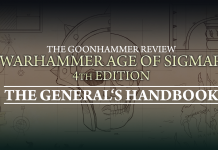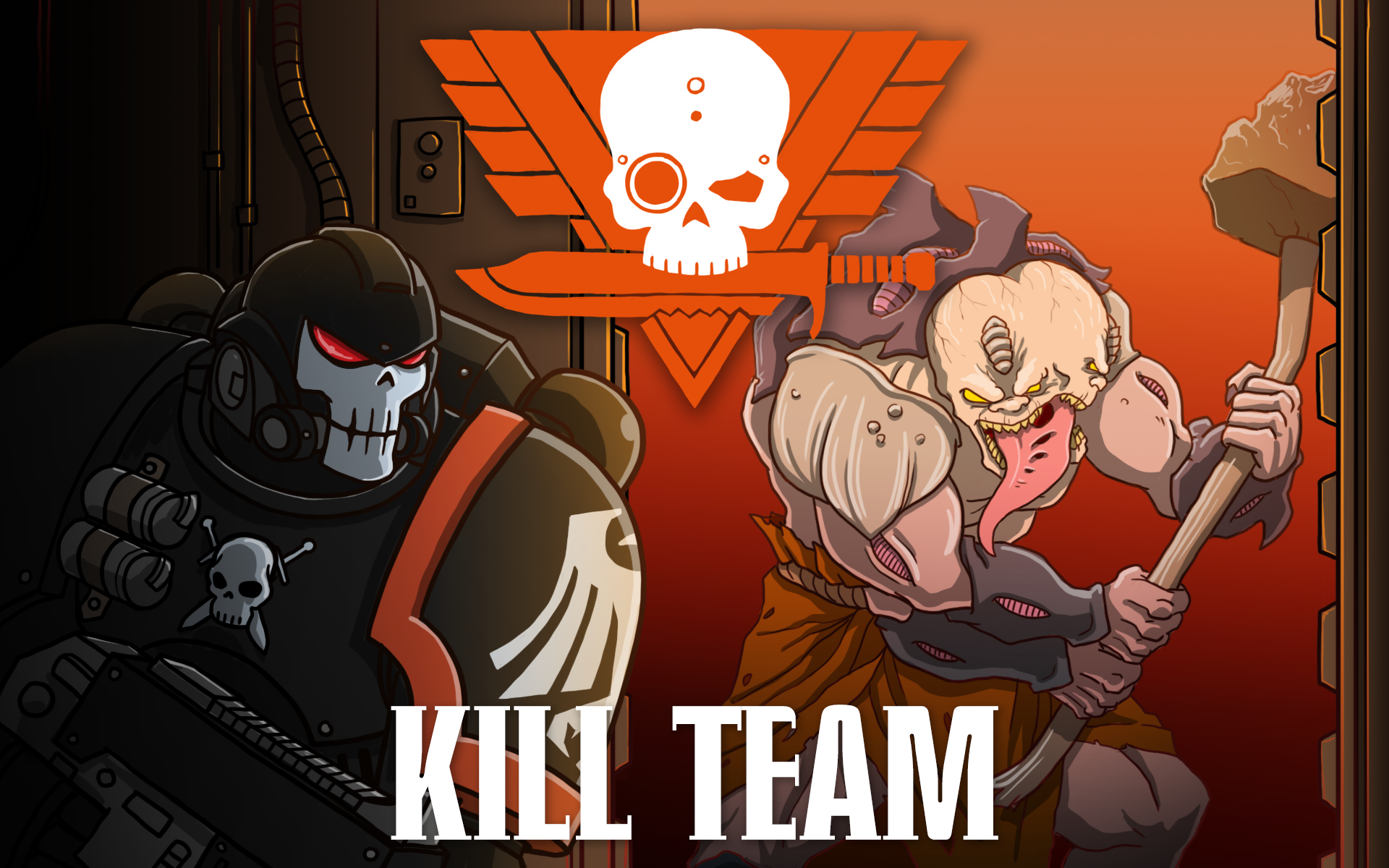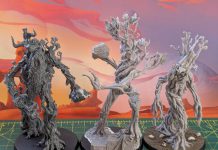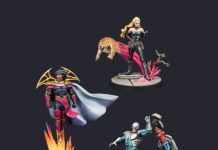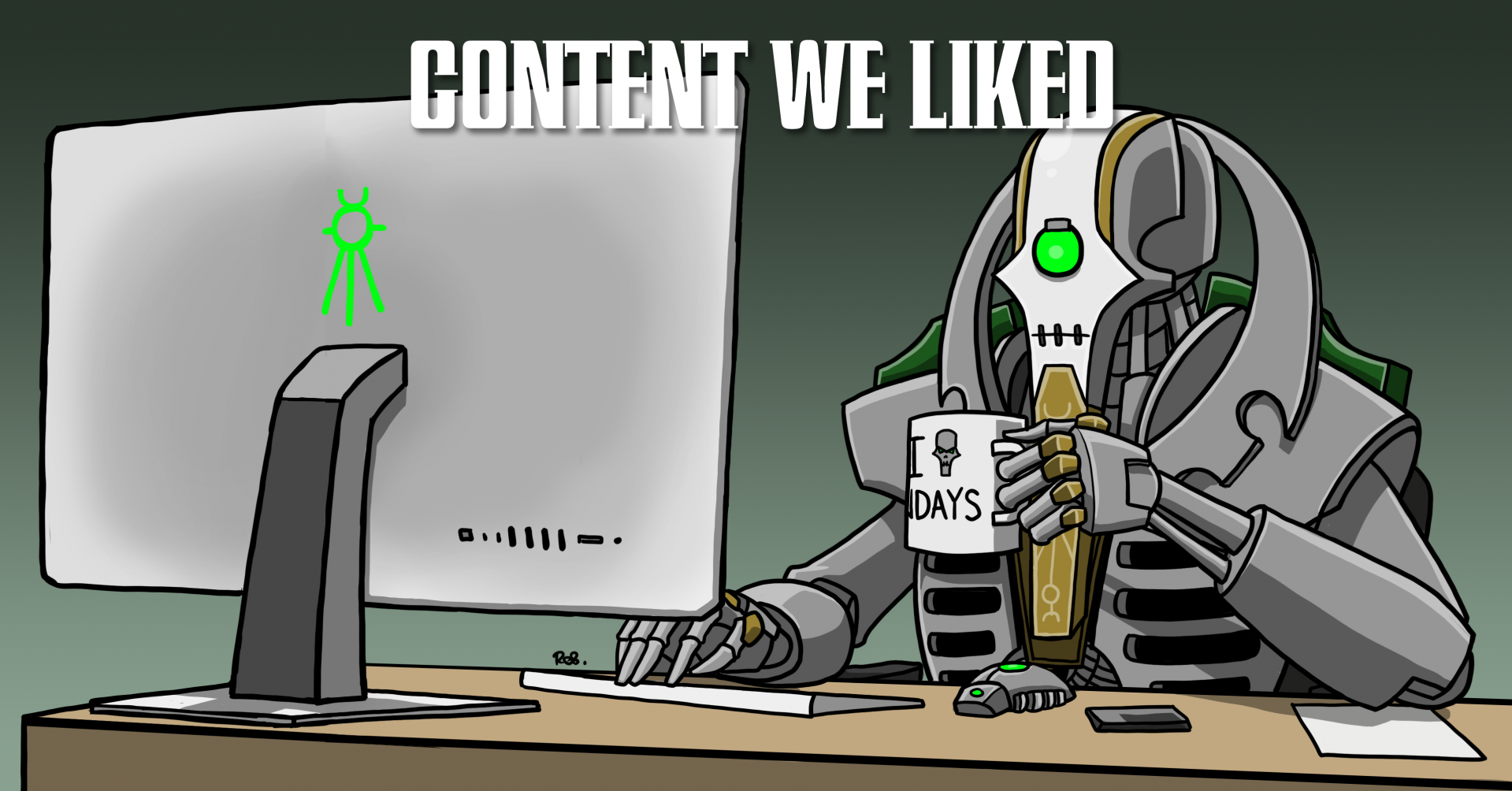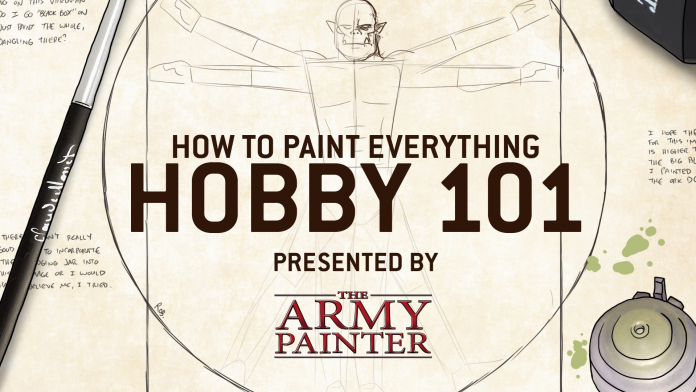Over the years the Goonhammer crew have put together a vast and expansive library of painting guides. Appropriately titled “How to Paint Everything” we’ve got schemes and recipes for 100s of models. They all, however, assume you know the difference between wet blending and glazing or what the hell “zenithal” means. Welcome to Hobby 101. This series will lay the groundwork to teach you the fundamentals and best practices to make your models shine.
The Hobby 101 series is sponsored by The Army Painter.
Palettes aren’t the most exciting part of miniature painting, and it would be easy to give them little consideration. When I started out mini painting as a young teen I had my hex pots of paint, some cheap brushes, and a cup of water. Between wiping my brush on the edges of paint pots and the cup of water, I somehow muddled through those early days of painting. While making due without a palette is possible, it’s less than ideal. Using a palette allows greater control of paint consistency and can help prolong the life of brushes. I’ll go over some options here and how to use them.
Basics
There isn’t anything too complicated about how to use a palette, but there are a few considerations. Using paints like Army Painter Warpaints in dropper bottles is straight forward. Shake the paint then squeeze a small drop out onto the palette. Miniature paints tend to go a long way on models, so a small blob is all that is needed most of the time. It may be tempting to keep squeezing the bottle harder if paint doesn’t come out immediately, but this can result in the dropper tip blowing off and paint getting everywhere. A small wire or unfolded paper clip can be used to clear out any dried paint.
To use paints in pots, like Citadel, begin by thoroughly shaking the paint. To get the paint onto the palette use an old brush (or the back end of the handle if you don’t have one yet) to dip into the pot and pick up a blob. Using a new brush to do this can lead to more paint drying higher in the bristles, shortening its useful lifespan.
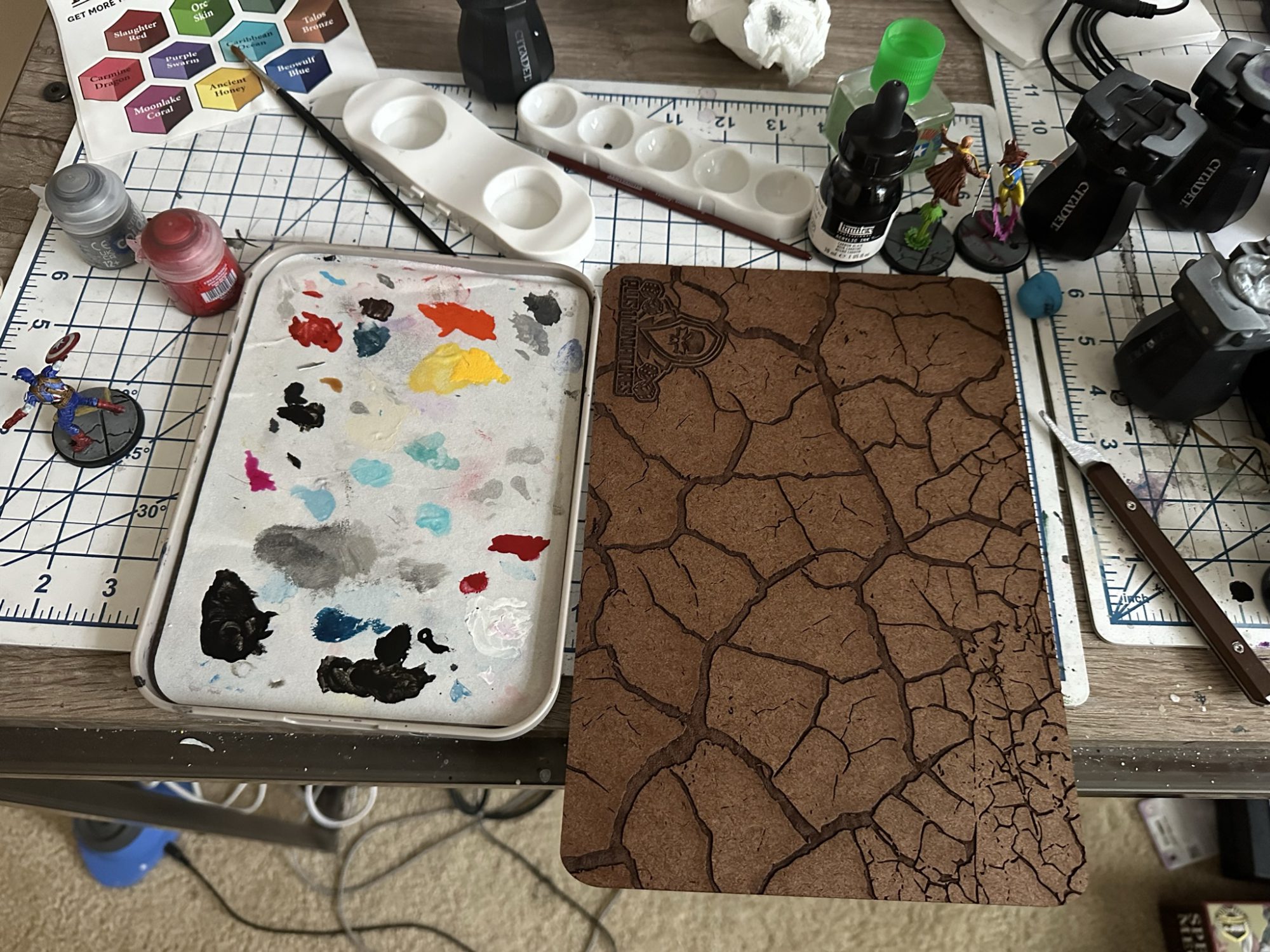
Now that paint is on the palette it can be picked up with a clean, damp brush. A little moisture in the bristles will help the paint come off smoothly. It’s only necessary to get paint on the bottom quarter to third of the bristles towards the tip. Getting paint higher up in the brush toward the ferrule (the metal bit holding bristles) can lead to dried paint causing the bristles to separate.
Paint consistency has to do with how much paint is on the brush and how much water is in the paint. A thick paint will have lower moisture content. Applying thick paint directly to a model will fill in small details and leave an uneven surface. Brush strokes become apparent and there will be raised globs of dry paint. Thin paints will be more watery. They will go onto a model thin and streaky. It will take several coats to get a smooth surface of solid color. Paint consistency varies quite a bit among different paint brands. The palette allows you to see how thick a paint is before it’s applied to a model. From here a little water can be added to thin a paint down if necessary. Several thin coats of paint result in a better looking paint job. For a more detailed look at consistency and applying paint, check out our Hobby 101: Painting Basics – Traditional Acrylic Paint article.
Plastic Palette
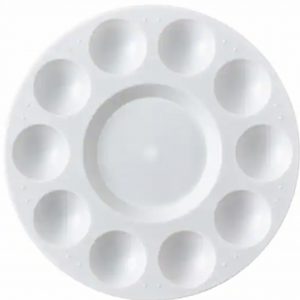
I used one of these round plastic palettes with wells until I started using a wet palette. This particular kind can be found at any art and craft stores for around $1 USD. Dried paint can be scraped off, warm water helps. The biggest con would be getting all that paint off, especially thin paint dried in the rounded surfaces.
Palette paper
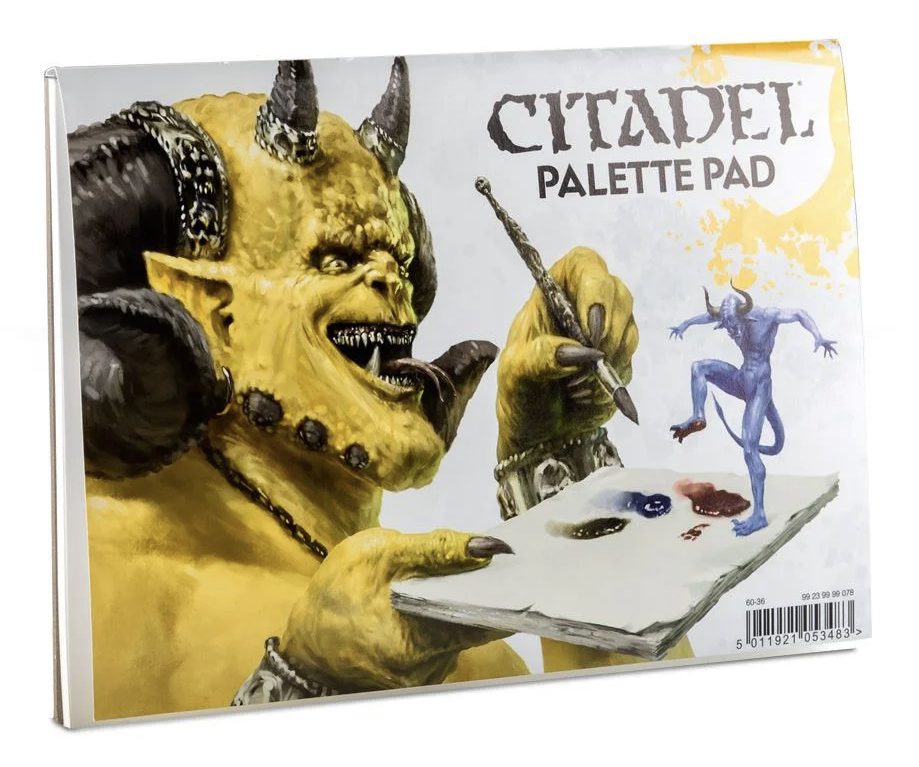
Palette paper is treated with a poly coating to give a smooth surface work on and prevent the paper from deteriorating when exposed to moisture. The Citadel Palette Pad pictured here runs in the $11 to $12 USD range for 20 sheets measuring eight inches by six inches. Most art supply and craft stores also carry various brands of palette paper such as Blick, Strathmore, and Canson. These are typically 40 to 50 sheets of 9×12 paper, for a little lower price than the Citadel option. Palette paper is often advertised as being easy cleanup, just throw it away when you’re done. Personally I don’t care for one use disposables, but imagine you can get some extended use out of each sheet by letting the paint dry between sessions.
Wet Palettes

Wet palettes work in a similar way to palette paper. The paper however will be semi permeable to water and sit on a spongey material that is wet. It will also have a case with a lid to hold in moisture. The main idea here is that the wet palette will prolong the drying time of paints, allowing you to use the same drop of paint longer. It also preserves color mixes throughout a painting session. Depending on climate and home conditions, a wet palette can allow the same paint to be used over the span of hours and even up to several days or longer. These require a little maintenance, mostly adding water when it gets too dry. They run in price from about $15 to $30 USD. I replaced my DIY wet palette with this one from Army Painter about a year ago. It comes with a handy tray to hold brushes and enough sheets that I’m still using the ones it came with.
DIY palettes
There are several Do-It-Yourself options with materials you may already have or that are available inexpensively. An old plate or piece of ceramic tile both make a good palette that can be easily cleaned by scraping dried paint off. I would suggest using white or light grey material to help distinguish color and consistency easier.
A palette can be made from a picture frame with glass by putting a white sheet of paper in the frame. Again, the dried paint will scrape off easily. A small razor scraper will quickly do the job.
I used this simple DIY wet palette for several years and was happy with how it worked.
Wrap Up
Regardless of what kind of palette you choose, it’s important to have something on your table for prepping your paints. Dipping out of pots or bottles directly is messy and will reduce the life of your brushes. Getting used to using a palette is also imperative for more advanced techniques like blending.
The Hobby 101 series includes tutorials and recommendations for new hobbyists. Click the link for more Hobby 101 content. And if you have any questions or feedback, or just want some advice, drop us a note in the comments below or email us at contact@goonhammer.com.

![[40k] Competitive Innovations in 10th: Death Beckons pt.3](https://d1w82usnq70pt2.cloudfront.net/wp-content/uploads/2020/01/Analysis_Banner.png)
